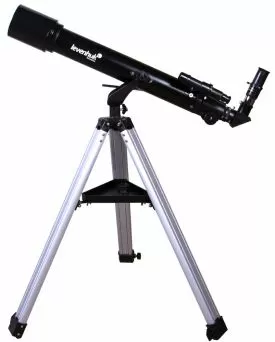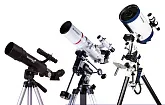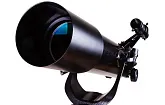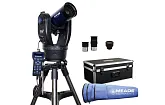What is a refracting telescope?
 A dioptric telescope is best known as a refracting telescope. It uses alens as an objective and an eyepiece. That is why it got its name. The first refracting telescope was designed by Galileo Galilei in 1609. Dutch astronomers, though, were working in this field during that period and Galilei was inspired largely by their ideas. However, it would be wrong to think that a modern refractor is an exact copy of the optical tool that was invented 400 years ago. The optical scheme remained practically the same, but the lenses for this telescope have undergone significant changes.
A dioptric telescope is best known as a refracting telescope. It uses alens as an objective and an eyepiece. That is why it got its name. The first refracting telescope was designed by Galileo Galilei in 1609. Dutch astronomers, though, were working in this field during that period and Galilei was inspired largely by their ideas. However, it would be wrong to think that a modern refractor is an exact copy of the optical tool that was invented 400 years ago. The optical scheme remained practically the same, but the lenses for this telescope have undergone significant changes.
The Galilean telescope used a divergent eyepiece lens and a convergent objective lens. This way, the transmitted image was upright and undistorted but at high magnification its clearness was lost. At first, the telescope provided only 3x magnification; later, Galilei managed to achieve up to 32x magnification. One of the disadvantages of the Galilean telescope was severe chromatic aberrations – a color aureole (halo) around the bright parts of an image.
In 1611, Johannes Kepler, a German physicist and mathematician, changed the eyepiece lens for a convergent eyepiece lens. The telescope objective lens remained the same. The image observed through the refractor became distorted but the field of view became wider. Chromatic aberrations still remained, but the Keplerian telescope became the ancestor of modern telescopes.
In 1758, a royal British optician, John Dollond, patented the achromatic refracting lenses for a telescope. Since then, they began to design achromatic refractors with chromatic aberrations reduced by multiple times. In 1763, the first apochromatic refractor was invented. Its image quality was impressive. Now these telescopes are affordable and are widely used in amateur astronomy.
Our online store offers an ample choice of refractors with different types of lenses. You can find a full assortment here. Our shop assistants will gladly help you choose an optical tool that will be suitable for your personal needs.
Any reproduction of the material for public publication in any information medium and in any format is prohibited. You can refer to this article with active link to levenhukb2b.com.
The manufacturer reserves the right to make changes to the pricing, product range and specifications or discontinue products without prior notice.



